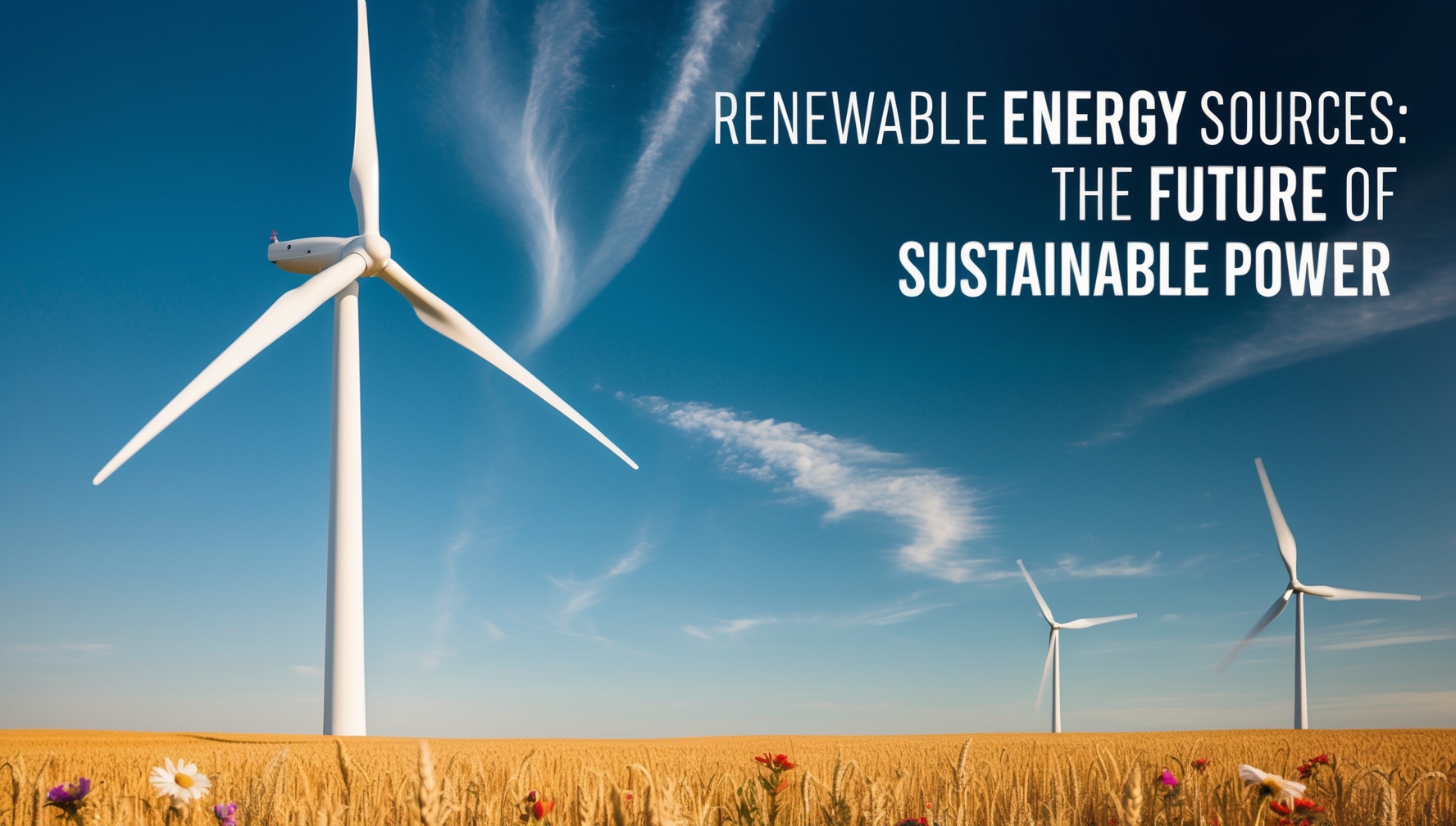As the world grapples with the challenges of climate change and the depletion of fossil fuels, renewable energy sources have emerged as a vital solution for sustainable power. These energy sources are naturally replenished and offer a cleaner alternative to traditional fossil fuels, significantly reducing greenhouse gas emissions. This article explores the various types of renewable energy sources, their benefits, and their role in shaping a sustainable future.
Types of Renewable Energy Sources
- Solar Energy: Solar power harnesses energy from the sun using photovoltaic cells or solar thermal systems. This abundant energy source can be used for electricity generation, heating, and even powering vehicles. Solar energy is one of the fastest-growing renewable sources, with advancements in technology making it more efficient and affordable.
- Wind Energy: Wind power is generated by converting the kinetic energy of wind into electricity using turbines. Wind farms, both onshore and offshore, have become increasingly common and contribute significantly to the energy grid. Wind energy is clean, sustainable, and one of the most cost-effective renewable energy sources available today.
- Hydropower: Hydropower utilizes flowing water to generate electricity, typically through dams that control water flow to turbines. It is one of the oldest and most established renewable energy sources, providing a reliable and efficient means of energy production. Hydropower accounts for a significant portion of global electricity generation.
- Biomass: Biomass energy is derived from organic materials such as plants, agricultural waste, and animal manure. It can be converted into biofuels, electricity, or heat. While biomass is renewable, its sustainability depends on responsible sourcing and management practices.
- Geothermal Energy: Geothermal energy harnesses heat from beneath the Earth’s surface for electricity generation and direct heating applications. This renewable source is particularly effective in regions with high geothermal activity, such as volcanic areas.
- Tidal and Wave Energy: These emerging technologies capture energy from ocean tides and waves. While still in the developmental stages compared to other renewables, they hold significant potential due to the predictability and consistency of ocean currents.
Benefits of Renewable Energy
- Environmental Impact: Renewable energy sources produce little to no greenhouse gas emissions, helping to mitigate climate change and reduce air pollution. Transitioning to renewables can significantly lower carbon footprints.
- Energy Independence: By harnessing local renewable resources, countries can reduce their reliance on imported fossil fuels, enhancing energy security and stability.
- Economic Growth: The renewable energy sector is a rapidly growing industry that creates jobs in manufacturing, installation, and maintenance. Investments in renewable energy can stimulate local economies and promote sustainable development.
- Sustainable Development: Renewable energy supports sustainable development goals by providing access to energy in remote and underserved areas, improving quality of life, and fostering economic opportunities.
The Future of Renewable Energy
The future of renewable energy looks promising, with projections indicating continued growth in the sector, potentially enhanced by innovations from the role of space exploration, such as new materials and technologies that could be developed in space. According to the U.S. Energy Information Administration (EIA), renewable energy consumption in the United States is expected to increase through 2050, driven by advancements in technology and supportive policies. In 2022, renewable energy accounted for about 13% of total U.S. energy consumption, with significant contributions from solar and wind power.
As technology advances and costs continue to decline, the integration of renewable energy into the global energy mix will become increasingly feasible. The transition to a sustainable energy future requires collaboration among governments, businesses, and individuals to promote policies that support renewable energy development and investment.
Conclusion
Renewable energy sources are crucial for addressing the challenges of climate change and achieving a sustainable future. By embracing solar, wind, hydropower, biomass, geothermal, and emerging ocean energy technologies, we can reduce our dependence on fossil fuels and create a cleaner, healthier planet. The shift toward renewable energy not only benefits the environment but also offers economic opportunities and enhances energy security for generations to come.
